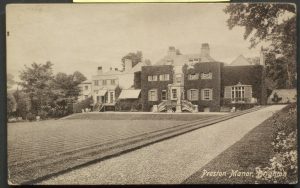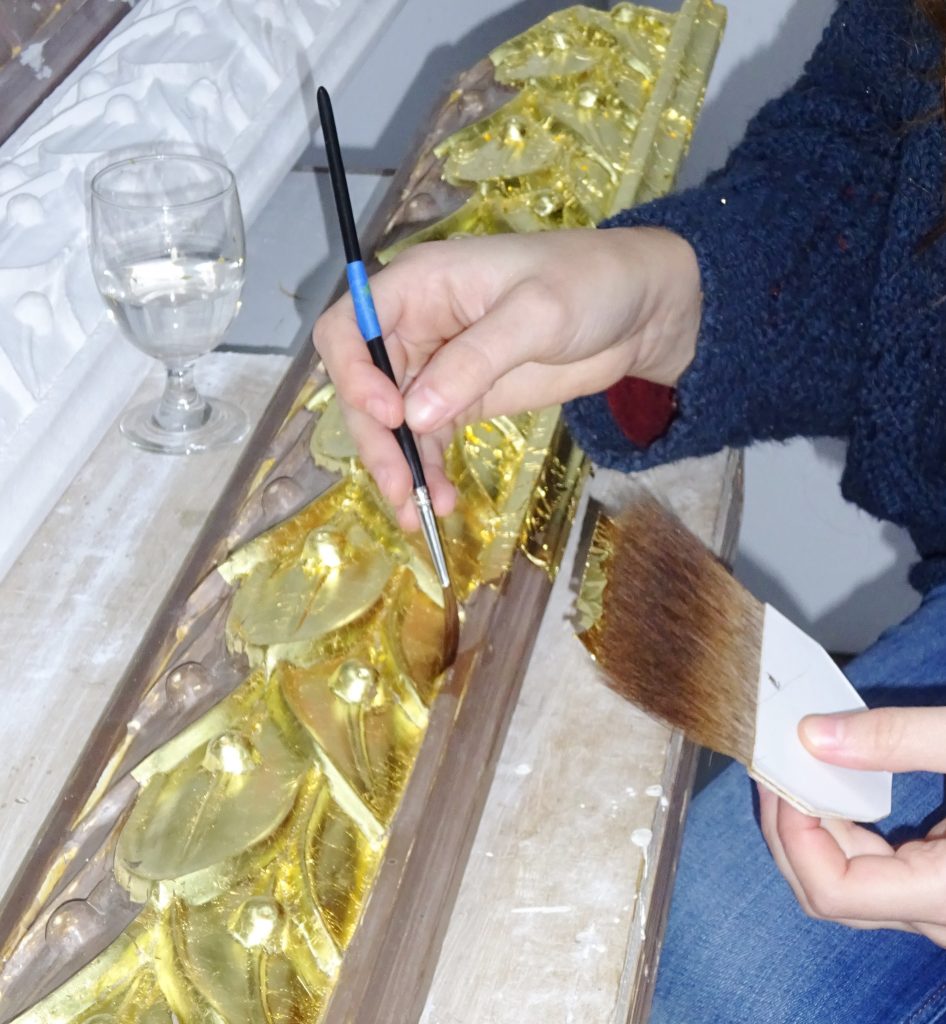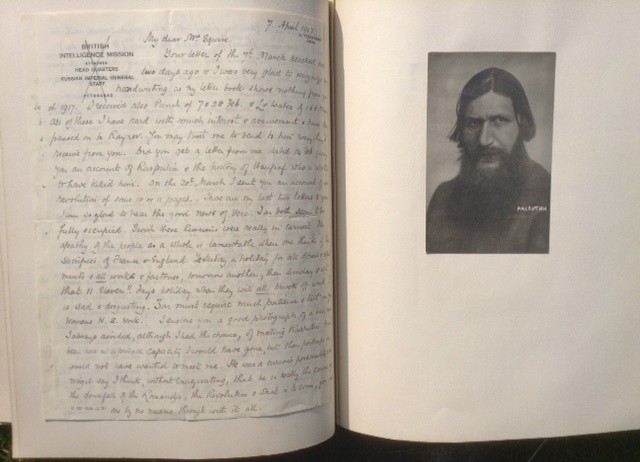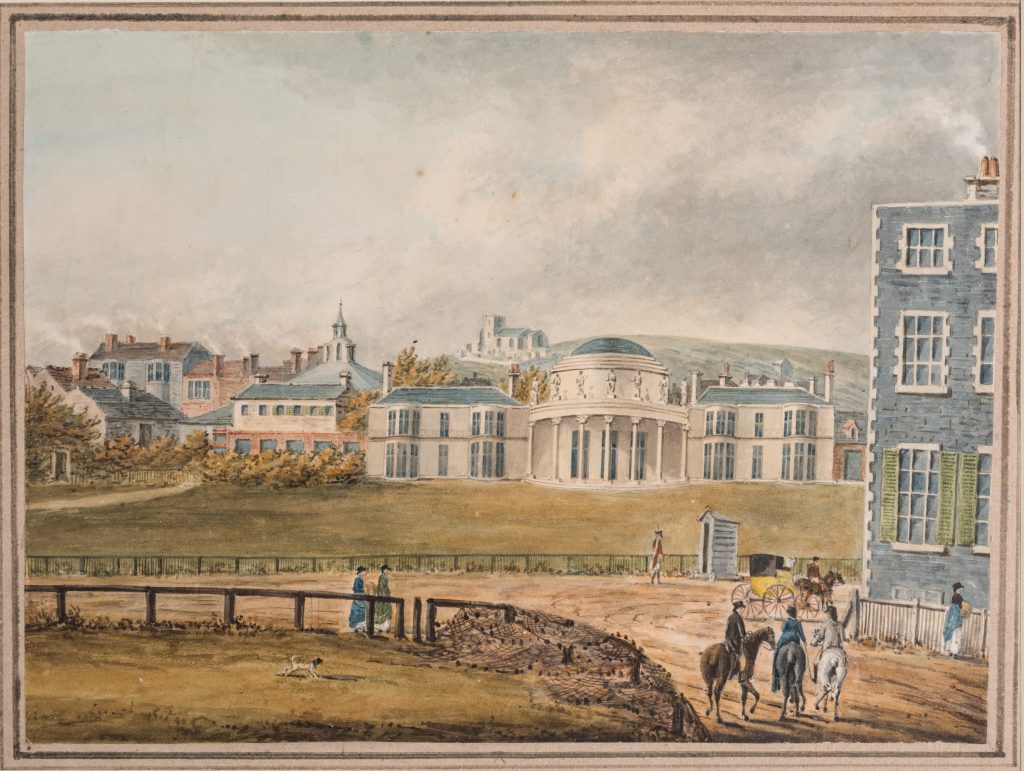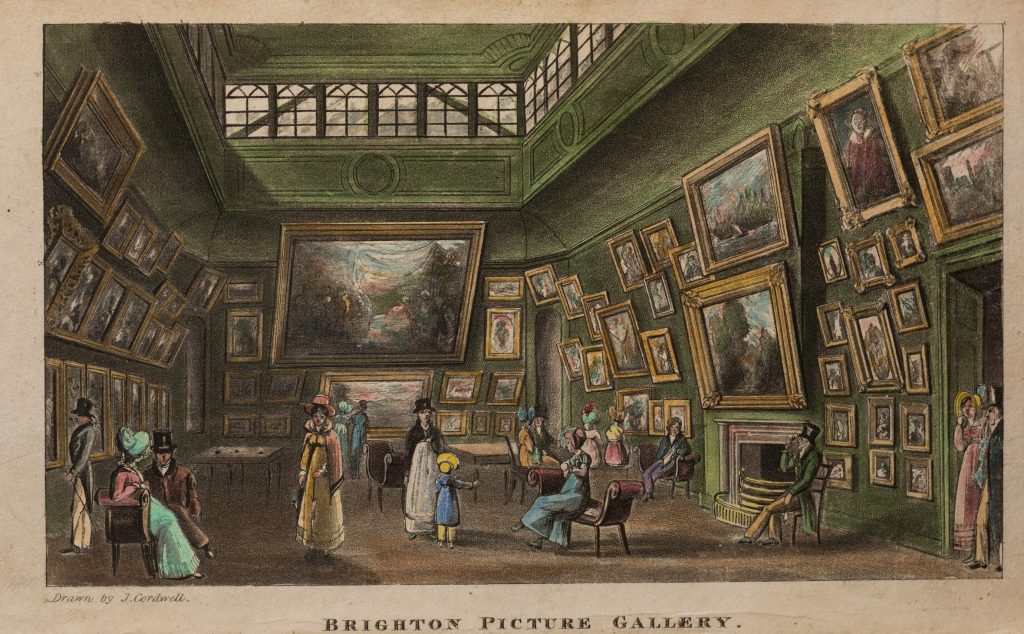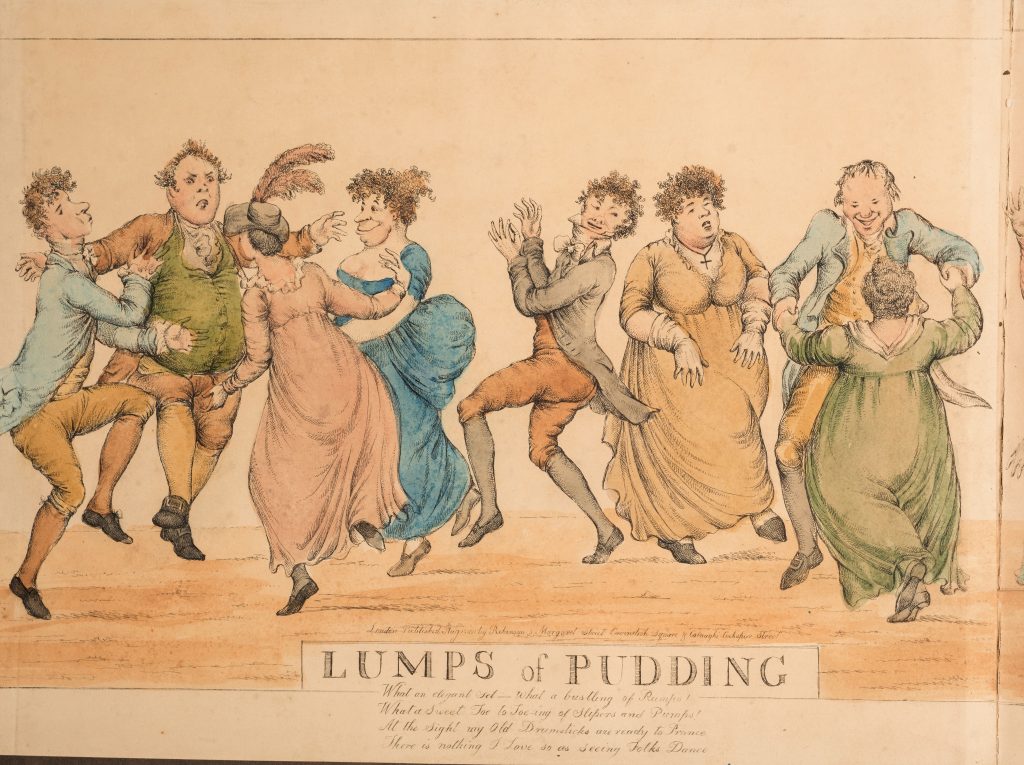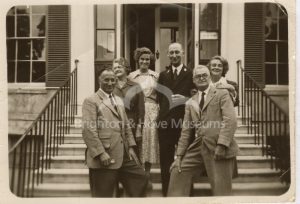
This is a legacy story from an earlier version of our website. It may contain some formatting issues and broken links.
Maurice Elphick (1885-1982) devoted his life to the service of the family at Preston Manor. He began work as a page-boy when barely in his teens, rising swiftly to the highest position in domestic service, that of butler.
When Preston Manor became a museum in 1933 Mr Elphick stayed on as custodian and caretaker. His life was one of continuous duty broken only by war.
A Butler at War
On 14 September 1917 Charles Thomas-Stanford of Preston Manor received a letter from Elphick, the contents of which tell an interesting wartime story.

‘To the Men of Sussex’ WW1 recruitment poster
In 1914 Mr Elphick had responded to the call to arms at the outbreak of war by enlisting in the Royal Sussex Regiment on 29 August. He was 30 years of age.
Perhaps like most keen volunteers he expected the war to be over by Christmas after a short adventure overseas. However, Mr Elphick was not serving Christmas dinner in the grand dining room at Preston Manor that festive season. He was serving his country.
Very little is known about Mr Elphick’s war, not least because he appears to have said nothing of his experiences. However, he became deaf in later life which could indicate damage caused by shell fire.

Military Service Act, 1916
Maybe Mr Elphick came home with a ‘Blighty wound’ because in 1917 he was living at his family farm, Marsh Foot in Pevensey, East Sussex. Superficial injury would not keep him home long and it looks like he was desperate to avoid going back to active service. I don’t think for a moment that Mr Elphick was a coward. He’d served three long years in a terrifying war. Now he faced going back. Following the Military Service Act of 1916 all men aged between 18 and 41 were automatically deemed to have enlisted and could expect imminent call up, and there were very few exemptions.
Male domestic servants were positively encouraged to enlist from the start of the war and households were expected to release their butlers and footmen, chauffeurs and grooms to serve King & Country. Mr Elphick was a single man (after the war he married a former domestic servant, Margaret Reardon, in 1922) so he had no legitimate means of avoiding returning to the Front or another military posting.
Friends in high places
With Mr Elphick in mind I spoke with Ann Kramer, author and expert on conscientious objection.
‘How could you get out of the war in his situation?’ I asked. Ms Kramer told me that getting a Certificate of Exemption was extremely difficult during the First World War.
‘To have any success you would need an influential friend in high office to plead for you,’ she said.
‘Would a Member of Parliament do?’ I asked. Ms Kramer smiled. ‘That would be perfect.’

Charles Thomas-Stanford in mayoral robes, 1910-13
Charles Thomas-Stanford was Member of Parliament for Brighton from 1914 to 1922 and Mayor from 1910 to 1913 and it looks likely he used his influence to help Mr Elphick at this time. We don’t have evidence of how, but we have Mr Elphick’s response from Marsh Foot Farm.
‘Sir, thank you very much for your letter. I have made enquiries and I understand the papers I sent in to the military will be sent to the local representative of the Sussex Agricultural Committee and I am told there is no fear of my being taken from here. Thanking you for the trouble you have taken for me. I remain Sir Yours Respectfully, Maurice Elphick.’
From 1915 County Councils were requested by government to set up County War Agricultural Committees to oversee British agricultural production and promote the efficient utilisation of agricultural land. Farms could be requisitioned if deemed they were not running properly.
People who worked on farms were treated favourably by committees when it came to conscription because the production of food was essential to the war effort. However, many farm workers voluntarily joined the armed forces. Those remaining were obliged to give proof of their indispensability. From March 1916 the only professions exempted from conscription were clergymen, priests or other ministers of religion. An unskilled farm worker would face tough questions at a local tribunal, especially at a time when women were coming forth in large numbers to work on the land.

Military Services Act Exemption Certificate, 1916
On 30 September 1917 Charles Thomas-Stanford received another letter from Mr Elphick.
‘Sir, my father received a letter this morning from the Agricultural Committee in answer to the letter I wrote saying an Exemption Certificate had been granted for me at their last meeting.’
He thanks his former employer, ‘for your letter which I appreciate more than I can say.’
Maurice Elphick’s appreciation was lifelong. He returned to Preston Manor as a butler, was later promoted to House Steward, and devoted himself unreservedly to Charles and Ellen Thomas-Stanford. After his employers deaths in 1932 he dedicated himself to the preservation of their memory and the care of their house. Was this staunch loyalty proof that Mr Elphick believed his life had been saved by Mr Thomas-Stanford in 1917?
The 1930s: a time of change

Entrance hall of Preston Manor
New Year 1933 must have felt like an unsettling leap into the dark for Maurice Elphick. Preston Manor had been given by gift to Brighton Corporation meaning he’d lost his job. Apart from his agricultural work at Marsh Foot Farm the 48 year old had known nothing but life working in domestic service. Yet he was able to stay in the house he loved because he was offered the job of custodian caretaker in the new Thomas-Stanford Museum (later to be re-named Preston Manor).
The Second World War
Preston Manor was closed as a museum from 1940 to 1945 and was used as a control centre for communications housing the ARP (Air Raid Precautions), the Home Guard, a First Aid Post and various municipal offices. The Cleves Room became a Committee Room and Ellen Thomas-Stanford’s bedroom the Town Clerk’s office. About 45 personnel were housed at Preston Manor with alterations made to accommodate the numbers.
Mr Elphick oversaw work and on 5 June 1940 he saved the house from disaster. Spotting smoke coming from a window he called the fire brigade. The fire had been caused by a candle left under a beam in the attic where workmen had been installing plumbing for lavatories. The Chief Fire Officer said, ‘another ten minutes and the whole place would be ablaze.’
For the duration Mr Elphick locked portable valuables in the massive old silver safe that was familiar from his days as a butler, but large items remained in situ. The Dining Room became a bedroom, and so as to protect the occupants from shattering glass in the event of bombing, the huge 18th century mahogany bookcase containing Ellen Thomas-Stanford’s collection of Chinese Buddhist blanc de chine lions was covered with mattresses and secured with rope.
Margery Roberts, daughter of curator, Henry Roberts wrote:
‘Miss Franks and I were giggling because Elphick was very serious and, of course, it was a serious thing but the mattresses kept slipping. Elphick did not laugh.’
Peace returned: Preston Manor in the 1950s
With war over the Manor interiors were restored to their former glory. Although no family or guest slept in the bedrooms or ate in the dining room the house was kept like an Edwardian time-capsule. The addition of a couple of museum display cases in the entrance hall made small impact on the illusion. A recently discovered document entitled ‘Preston Manor Staff and Duties’ dated 26 April 1958 is a fascinating insight into how Preston Manor was run in the mid-20th century.

Mr Elphick’s duties 1958
Domestic and central heating coke-fired boilers required cleaning, lighting and stoking. Some staff rooms had labour-intensive open coal fires requiring many buckets of coal each day in the winter. The house was open all year round but closed on Tuesdays for each room to be thoroughly cleaned or ‘turned out’ one by one in a cycle. Mr Elphick and the women staff cleaned the decorative objects, mirrors and furniture. Today this task is done by a specialist conservation team trained in museum object handling and care.
 Only one known photograph of Mr Elphick exists. He is shown third from the right wearing a dark suit with shiny lapel badges of unknown significance. The photograph dates to the mid-1950s when Preston Manor was run “like a family home” according to Miss Margery Roberts who was given the role of Honorary Curator after her father’s death in 1951. Margery left a descriptive pen-portrait of Mr Elphick in her 1998 autobiography, A Time Remembered.
Only one known photograph of Mr Elphick exists. He is shown third from the right wearing a dark suit with shiny lapel badges of unknown significance. The photograph dates to the mid-1950s when Preston Manor was run “like a family home” according to Miss Margery Roberts who was given the role of Honorary Curator after her father’s death in 1951. Margery left a descriptive pen-portrait of Mr Elphick in her 1998 autobiography, A Time Remembered.
Margery describes Mr Elphick’s transition from butler to custodian:
‘The change of status was not easy. Always known as Elphick (Christian names were not used for staff in those days), he found it difficult to become a servant of Brighton Corporation and not a private family. He did not like modern workmen. He got what I call ‘lofty’; was very superior in his way, and not very tactful. However, he had a deep sense of duty. He kept it (the house) running beautifully, on oiled wheels.’
‘The Lodge’ at Preston Manor James Grey Collection
Until its demolition for road widening in 1936 Mr Elphick and his wife and daughter lived at The Lodge, the attractive flint-faced gabled gatehouse to Preston Manor inhabited by gardener, Henry Hooker in the 1870s. Margery describes Mrs Elphick as ‘a quick-moving, very energetic young woman’. The Elphick family were re-housed in the west wing basement.
‘They were at garden level so the flat was not dark, although there were bars at the window,’ Margery writes cheerily of rooms that were markedly less comfortable than her quarters two floors above.
Mr Elphick retires
Today we live in an era when the age of retirement has risen and is usually no longer compulsory. Mr Elphick had no wish to leave Preston Manor aged 65 as was required so he was granted a period of extension, which expired on his 68th birthday, 3 December 1953. The Local Government Superannuation Act of 1953 required him to make superannuation contributions towards his pension up to the age of 70 at a rate of 5% of his salary. After 1950 a special Council meeting was held annually to agree the continuation of Mr Elphick’s post.

County Borough of Brighton letter 25th July 1951
However, he was eventually persuaded to take his well-earned rest retiring officially on 1 June 1958, aged 73. Yet retirement bought worry. Habituated to a working life in which a home was automatically provided, the Elphick family faced eviction and suffered understandable distress until a rented flat was found in Kemp Town. Margery writes that the Elphicks ‘settled in happily in spite of people hanging their clothes out of the window.’
It seems Maurice Elphick could not keep away from Preston Manor. A letter dated 20 July 1960 from Stephanie Gasston; a teacher at Roedean School begins ‘Dear Miss Roberts, I cannot adequately thank you and Mr Elphick for the great pleasure and profit of our visit to the Manor today.’

Drawing Room chandelier
In 1963 Margery describes Mr Elphick visiting to undertake the complex task of cleaning the chandelier in the drawing room. That year a reception was held to mark the 30th anniversary of the house becoming a museum. Brighton Council’s Chief Publicity Officer, Mr Bedford, persuaded the BBC to film the occasion with the lure of having on site the ‘whole faculty from the University of Sussex.’ This piece of film is almost certainly lost but the original transmission was watched by Margery and Mr Elphick on a television set in Mr Bedford’s office. Margery writes, ‘Elphick was almost in tears’ with pleasure and pride.’ Maurice Elphick continued to visit Margery at Preston Manor until her retirement in 1970.
Finding the elusive Maurice Elphick
A typed transcript exists of an interview with Mr Elphick in 1972 and from this we have quirky snippets of information: buckets of eucalyptus pods were kept in the entrance hall for fragrance; and when the world famous author Rudyard Kipling visited, Mr Elphick thought he looked like a farmer. Later that decade Mr Elphick moved to Sherwood, Nottingham to be looked after by his daughter, Audrey. In 1979 he was tracked down by David Beevers, Preston Manor’s newly appointed curator, and the pair corresponded until 1981. Sadly Mr Elphick’s photographs went astray in his move from Preston Manor to Kemp Town explaining perhaps why no pictures exist of this important character in Preston Manor’s 20th century story. To find a photograph of Mr Elphick in his butler’s uniform would be historical gold dust, and maybe one exists somewhere.

Three Preston Manor domestic servants eating apples, 1929
The Preston Manor domestic servants appear in a series of relaxed off-duty photographs from the 1920s but without Mr Elphick. It is possible his long-honed butler’s dignity inclined him against being immortalised in such a frivolous manner.
In the 1980s interviews were conducted with servants employed at Preston Manor sixty years before. Through these reminiscences we have some insights into Mr Elphick’s character.
He was ‘a typical butler, staid yes, very strict…he was stiff and starchy, except that I taught him how to play yo-yo.’
Drusilla Wood 4th Housemaid
He ‘talked in a low voice and there was a sacred atmosphere in the house.’
Lily Smith, Kitchen Maid
By the start of the 21st century people with first hand knowledge of Mr Elphick were dwindling. Margery Roberts died in 2000 aged 92. Fortunately he appears throughout her 1998 memoire and always as plain Elphick, as if she were the grand lady and he the eternal butler as old as his name. Elphick is an unusual Anglo-Saxon surname recorded in the Doomsday Book of 1086 as Aelfech, its Sussex variant.
For Margery, Mr Elphick was a permanent fixture she’d known all her life. He was butler at Preston Manor when she visited as a child with her parents who knew the Thomas-Stanfords socially. For 25 years from 1933 to 1958 they shared Preston Manor as a home: Margery living with her parents in the west wing, and Mr Elphick in staff quarters.
I have the pleasure of being in correspondence with Margery’s niece who visited her aunt’s rooms at Preston Manor. Her memories of Mr Elphick are hazy but she writes, ‘to me as a child he seemed quite formal and respectful. I remember that he was somewhat deaf.’
 Unfortunately Aunty Margery never wrote of the former servants she met, preferring instead to recall her brushes with royalty. Of Queen Mary’s visit to Preston Manor on 10th October 1938 she writes, the Queen ‘was struck with the appearance of the rooms particularly with the brightness of the silver’ causing Mr Elphick to be presented and praised for his work.
Unfortunately Aunty Margery never wrote of the former servants she met, preferring instead to recall her brushes with royalty. Of Queen Mary’s visit to Preston Manor on 10th October 1938 she writes, the Queen ‘was struck with the appearance of the rooms particularly with the brightness of the silver’ causing Mr Elphick to be presented and praised for his work.
Margery tried to circumvent Mr Elphick’s natural humility by making a secret sound recording. In A Time Remembered she describes a comical scene with a borrowed tape recorder, which in those days would be a heavy and sizeable reel to reel device.
‘Mr Sheppard, a member of museum staff very kindly, and rather audaciously, fixed up a machine behind a bowl of roses in my sitting room so a recording could be made of Elphick telling me the past customs of not only the house but Preston…he was in full spate that morning for an hour.’
To Margery’s horror the tape came to an end ‘with a great noise,’ causing her to rush Mr Elphick into the kitchen for a glass of sherry. She ends the anecdote, ‘sadly, no one could be found at the Museum or Library to transcribe that record, and so it has been lost to posterity, a great pity.’
Maurice Thomas Elphick died in Nottingham on 25 July 1982 in his 97th year.
His generation were the last of the old servant class whose unquestioning deferential labour made the lives of the Victorian and Edwardian wealthy so easy and comfortable. The 1914-1918 war marked the beginning of the end of domestic service. Social attitudes were changing, wages increasing and job opportunities broadening, especially for women. By the end of the Second World War in 1945 the master-servant system had all but collapsed.
Maurice Elphick saw these enormous social changes in action at Preston Manor as the house transformed from an ‘Upstairs Downstairs’ family home of the Edwardian period to a recognisably modern historic house museum in the forward-facing 1950s.
‘Nothing but happy memories,’ he always wrote in his Christmas and birthday cards to Margery Roberts.
Margery’s niece sums up Mr Elphick’s unique contribution to the Preston Manor story.
‘In retrospect I can see what an exceptional and important role he played in the transition of Preston Manor from private residence to a house and museum open to the public. He could have moved elsewhere, but asked to continue working at the Manor, a place which he knew inside out. I am sure he later gave my aunt immense support when she became Honorary Curator after her father’s death. He and my aunt would have shared so many memories as well as a deep-seated commitment to caring for the house as Sir Charles and Lady Thomas-Stanford would have wished.’
Mr Elphick’s legacy

The Butler’s Pantry
Today there is no visible trace of Mr Elphick’s half-century tenure at Preston Manor. Ever the invisible butler, he has receded into the shadows. The Butler’s Pantry you can visit today was a room used by Mr Elphick’s predecessor, Mr Benjamin Beasley in the period before 1905.
Mr Elphick’s quarters exist in the basement of the west wing, which was newly built when he came to the house in 1906. School children eating their packed lunches sit in a room used by the Elphick family after the demolition of The Lodge. Fittingly therefore Mr Elphick’s name lives on as a character in the long-running role-play educational session for schools, ‘Situations Vacant’, in which Key Stage 2 children dress in Victorian costume and find out what life was like below stairs. Generations of children and young people visiting from across the South East will never forget meeting Mr Elphick the butler. We know this because when those children return as adults, they often tell us so.

Children’s lunchroom (the former Elphick family rooms)
I think the real and unassuming Mr Elphick would be baffled to know he’d become a living history personality. He’d be even more surprised if he knew he is regarded today as a character of equal importance to the Preston Manor story as Sir Charles and Lady Ellen Thomas-Stanford.
Paula Wrightson, Venue Officer, Preston Manor






